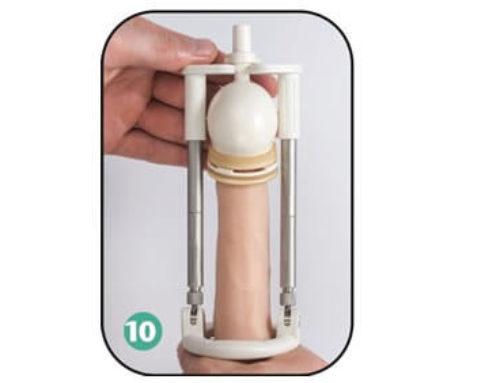by Andrew Siegel, MD- Urologist, Author, Inventor
We all have favorite colors (I’m partial to blue and green) and numbers (3 does it for me), but favorite nerves…Who has a favorite nerve? I submit that you have a favorite nerve, but just don’t know it!
There are many nerves within the human body and there are quite a few of vital importance. They do their jobs quietly, diligently, efficiently, behind the scenes. They are usually taken for granted and most of us have no awareness of them unless their function becomes impaired–as might happen when they become inflamed, traumatized, injured or diseased–giving rise to a host of neurological symptoms.
The system of nerves is essentially a massive network of “wires” that conduct and transmit electro-chemical impulses from the brain and spinal cord to and from every cell in the body. In order for nerves to work effectively, they need some “breathing room” so that they can function unimpeded.
We often become aware of our nerves when they are compressed, temporarily altering their function and giving rise to numbness, pins and needles sensation, etc. It happens to me when I sleep with my arms folded across my chest (ulnal nerve compression from arm flexion) causing me to wake up with a funny sensation involving the outside of my hand and pinky finger and the outer part of the ring finger. It occurs when I go out on a long bike ride, causing a tingly sensation in my right hand (ulnal and radial nervecompression from wrist hyperextension), despite wearing padded gloves. Similarly, I experience genital numbness (pudendal nerve compression from the bike seat), even though I wear padded bike shorts and have a fitted saddle. It also tends to happen when I sit for a lengthy period of time on the “porcelain throne” engaged with reading material, causing my lower legs and feet to “go to sleep” (sciatic nerve compression). Driving for a long period of time also irritates my sciatic nerve, causing an achy sensation in my butt, which runs down the back of my thigh, a good reason to periodically stretch out.
So What Is Your Favorite Nerve?
The cranial nerves are good candidates—those that derive directly from the brain and are responsible for sight, hearing, smell, balance, swallowing, smiling, etc. Most every medical school learns the following cranial nerve mnemonic: On Old Olympus Towering Tops, A Fin And German Viewed Some Hops— the first letter of each word representing the first letter of the 12 cranial nerves: Olfactory, Optic, Oculomotor, Trochlear, Trigeminal, Abducens, Facial, Auditory Vestibular Nerve, Glossopharyngeal, Vagus, Spinal Accessory, Hypoglossal. The 31 spinal nerves are certainly contenders as well—they originate directly from the spinal cord and provide sensation and the ability to use our muscles, indisputably key functions.
The pudendal nerve should be considered one of our dearest and fondest. It is the main nerve of the perineum—that valuable, but often unappreciated bit of human real estate located between the scrotum and the anus in the male and the vagina and the anus in the female. This nerve provides sensation to the penis and scrotum of the male and the clitoris, vulva and vagina of the female. In both males and females it provides sensation to the perineum and anal area and enables contraction of the pelvic floor muscles and voluntary continence muscles–the external urinary and anal sphincters. Its function is imperative for sexual arousal, clitoral and penile erection, ejaculation and orgasm.
Who Knew? The term pudendal derives from the Latin “pudenda,” meaning “the shameful parts.” Sadly, our culture has strong puritanical roots.
Who Knew? In the early 19th century, Benjamin Alcock, a prominent Irish anatomist, first described the existence of the pudendal nerve and the channel in which it travels, known as “Alcock’s canal.” Alcock sure is a fitting name for the man who discovered the nerve responsible for penile sensation, ejaculation and orgasm!
The Human Sexual Response
In accordance with Masters and Johnson’s classic findings, the human sexual response can be can be distilled down to increased genital and pelvic blood flow (the primary reaction) and muscle tensioning (the secondary reaction). Orgasm is the release from the state of increased blood flow and tensioned muscles. It is pudendal nerve stimulation that initiates the process of increased genital/pelvic blood and pelvic muscle tensioning. At the time of orgasm the pudendal nerve is what drives the rhythmic contraction of the pelvic floor muscles.
With sexual stimulation of the genitals, sensory nerves that form the pudendal nerve relay to spinal cord centers, which reflexively relay the electrochemical message to increase genital and pelvic blood flow, resulting in female lubrication and clitoral engorgement and male penile erection. The nervous system also relays directly to sexual centers in the brain, including the hypothalamus, hippocampus, amygdala, thalamus, brainstem etc., enhancing this reflex response. Brain-induced erotic stimulation (visual cues, sounds, smells, touch, thoughts, memories, etc.) leads to further genital stimulation via excitatory pathways that descend down from the brain to the genitals.
The bulbo-cavernosus reflex (governed by sensory and motor branches of the pudendal nerve) is important in initiating and maintaining erection: with stimulation of the head of the penis or clitoris, a reflex contraction of the pelvic floor muscles increases genital blood flow, enhancing penile rigidity and clitoral engorgement.
Bottom Line: Nerves are required for all body functions and some are indispensible. Although there are more important nerves than the pudendal nerve–such as the vagus nerve, which commands unconscious body processes such as heart rate and digestion–the pudendal nerve just might be your favorite! Without a functioning pudendal nerve, your genitals would be numb, sex would be impossible, your pelvic organs would hang unsupported and you would be diapered because of absent bladder and bowel control.






